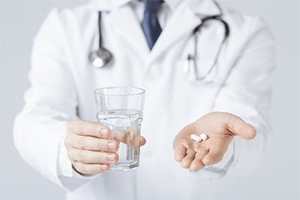Is Negative Self-Hypnosis Ruining Your Life?
How to free yourself from negative hypnotic states that make you anxious, angry, or afraid
 We negatively condition ourselves with self hypnosis all the time without knowing it.
We negatively condition ourselves with self hypnosis all the time without knowing it."It's going to be terrible!"
Silent, invisible ripples of tension seemed to pulse through the room. Kelly's obvious unease was beginning to make me feel a bit jumpy myself.
"I keep thinking about next Wednesday," she told me. "Every morning I wake up and it's on my mind, and I feel sick to my stomach." So what was happening next Wednesday? She almost seemed not to want to tell me. But eventually she came out with it.
Kelly had to undergo an MRI scan. She'd have to lie down in the enclosed space within the scanner for as long as 50 minutes. Now, it was just a routine check, and she wasn't worried about her health - just the experience of being, as she put it, "totally out of control". As we started to move on to talking about what we could do about it, she said something that made me think.
"I've never been hypnotized before." Her eyes met mine for the first time, and I could tell she believed what she was saying. But I knew better.
Kelly assumed she'd never been hypnotized before. But she most definitely had.
Hypnosis is all around
We've all been hypnotized, whether we believe it or not. That's because hypnosis is not an unnatural or artificial state of being. It's central to what it means to be human.
If this were not the case then no hypnotist could ever induce hypnosis in another human being without the aid of drugs or direct electrical brain stimulation (not tools I keep in my kit!). When we hypnotize another person we are simply tapping into a natural psychophysiological human capacity.
Hypnosis happens all the time. It happens in the absence of a hypnotist. It happens unintentionally and unknowingly. It happens throughout our entire life, from our earliest days - not just in the presence of someone with certificates lining their practice walls, or on a stage for the amusement of a crowd. It happens to me, and it happens to you. It's probably even happened to you today.
If all this sounds a bit baffling, there's something you need to know.
Whenever we focus our attention inward, such as during daydreaming or worrying (which is really just a form of daydreaming), we enter trance. And trance states condition our emotional responses.
This happens whenever we learn something new. It happens when we know we are learning, but also when we don't. It's the kind of learning that conditions you to link a product with a musical jingle, or to fear insects, or to salivate upon simply hearing the word 'chocolate'. It isn't conscious. It isn't intentional.
But is it a problem?
Well, not always. Much of this naturally hypnotic non-conscious learning is useful. But some of this emotional conditioning - as occurs in addiction, phobias, and post-traumatic stress disorder - can blight our lives. These are some more extreme examples of the potential adverse effects of emotional conditioning. But here I want to look at how we all inadvertently,and often repeatedly, misuse the imagination.
So often when we talk about 'imagination' we assume we are talking about something benign. A positive force of creativity. We hope our children will be imaginative, and we admire people who are creative. This can be great. But it can also cause problems when it proceeds unchecked.
Nightmares and the horrific flashbacks of PTSD are both processed through the imagination. So too the hopeless expectations of depression and the self-torturous inner scenarios of the sickeningly insecure and the chronically jealous.
We might not always think of chronic worrying or the painful ruminations of depression as products of the imagination, because they seem to happen to us, not by us. But they are produced by the same inner processes as daydreaming and story making.
To understand this is to see that, while imagination as a human tool has the potential to be used constructively to create positive changes in the world, it can also be misused - with sometimes disastrous consequences.
The dark side of your imagination
We dream at night during a phase of sleep known as rapid eye movement (REM), in which the eyeballs can be seen flicking from side to side beneath the closed lids. Hypnosis, a state in which both beneficial and negative conditioning can take place, has many similarities to the REM state. It seems we can enter REM not just when we are asleep, but also in states of relaxed hypnotherapy - and even when we are shocked, surprised, daydreaming, or worrying!
But there's another kind of negative self-hypnosis that people often do. I've done it myself. Kelly was certainly doing it. And maybe you do it too.
A guide to terrifying yourself
Most people have heard the story of the 'classical conditioning' of Pavlov's dogs. Feed a dog while sounding a bell enough times and pretty soon it will salivate when you sound the bell, even if you don't give it food.
The same principle applies to negative self-hypnosis. Let me show you what I mean.
Okay, so imagine (but not too vividly!) public speaking, or a dental visit, or some other event has made you feel really scared in the past. Or, if you're yet to be in such a situation - one that makes you doubt your capacity to manage such an experience without feeling terrified - just say the event is next Wednesday as it was for Kelly. If you want to train yourself to feel scared in that situation, here's what you do:
- Imagine yourself in that future situation.
- As you imagine the situation, feel tense and scared, even though it's only an imagined situation. When you imagine something while feeling an emotion, your unconscious mind will build an association between that feeling and that situation. This is known as hypnotic rehearsal.
- Repeat this 10 to 30 times before you actually go into the situation.
Kelly had been doing this negative preparation for next Wednesday par excellence.
She described to me how she'd be innocently going about her business when suddenly she'd remember about the scan. "I feel sick and really shaky every time I think about it..." she said timidly.
No wonder! When you repeatedly imagine something, anything, while feeling an emotion - in this case, fear - then your unconscious mind starts to feel that fear is the required response to that situation. When you then go into that situation, it's as if your unconscious mind is saying: "Hey, we've prepared and rehearsed for this. I know what to do. I'll bring on the fear!" And that's exactly how I explained negative self-hypnosis to Kelly.
"Like Pavlov's dogs!" she replied brightly.
She was dead on. This is indeed a form of classical conditioning, but done via the imagination.
So how can this negative self-hypnotic conditioning be overcome?
Turn harm into help
First of all, we need to work out whether the negative associations have arisen from the effects of the past. I helped Kelly deal with two unpleasant memories of having previously been inside a MRI scanner, and pretty soon she could recall those times while feeling calm and relaxed.
But we still had to deal with her habit of imagining next Wednesday as a horrific torment. And that's the next step: to turn negative hypnotic rehearsal into good mental preparation.
I relaxed Kelly deeply and got her to access times when she had felt relaxed, confident and happy. I helped her build those feelings up then practise calling them forth until it came easily.
I then had her imagine observing herself going for her MRI scan the next Wednesday as though she were seeing herself in a movie. She was to see herself looking calm and relaxed with all her resourceful feelings. Asking someone to recall or imagine an event from a third-person perspective seems to diminish strong emotion very fast. We did this over a focused period of 20 minutes to really begin to shift the old fearful association.
I also used hypnotic time distortion with Kelly so she could experience 'time flying' - so that 50 minutes could seem like 5 minutes.
Finally, I suggested that she could use self-hypnosis while actually in the MRI scanner to be "anywhere in the world she wanted to be". I suggested that we can all transcend the limitations of our situation whenever we strongly imagine being elsewhere.
On a physical level Kelly would be in the scanner, but on a psychological level she could be at home in her beautiful garden planting seeds and pruning rose bushes. For another example of this kind of transcendence, check out tip five in this blog post.
To further strengthen Kelly's new association with the situation, I gave her the following homework. I asked her to:
- Recognise when she was using negative self-hypnosis, and STOP! We need to know what we are doing before we can control it.
- Only think about next Wednesday when she was physiologically relaxed: deeply calm in the bath, doing 7/11 breathing, or whatever it might be. Whatever you imagine while feeling calm will begin to be tagged as a non-threatening, even inherently comfortable situation by your unconscious mind.
Hypnosis is neither good nor bad. It's a tool,and as such can be used or misused.
Kelly had been misusing her hypnotic capacity to scare herself and negatively rehearse a future event. And she hadn't even known she was doing it, because it felt so natural.
I simply taught her to take the reins of this oh-so-powerful natural tool, and use it to help, not harm, herself.
When next Wednesday had become last Wednesday, I saw Kelly again. She reported that after our last session she'd almost started to look forward to the scan! For 10 minutes a day, she had practised feeling calm while thinking about it. Pretty soon, she said, she forgot to think about it at all.
"So what was the actual scan like?" I asked her.
Her eyes twinkled. "I don't really know," she replied. "I was in the garden pruning the rose bushes most of the time!"






